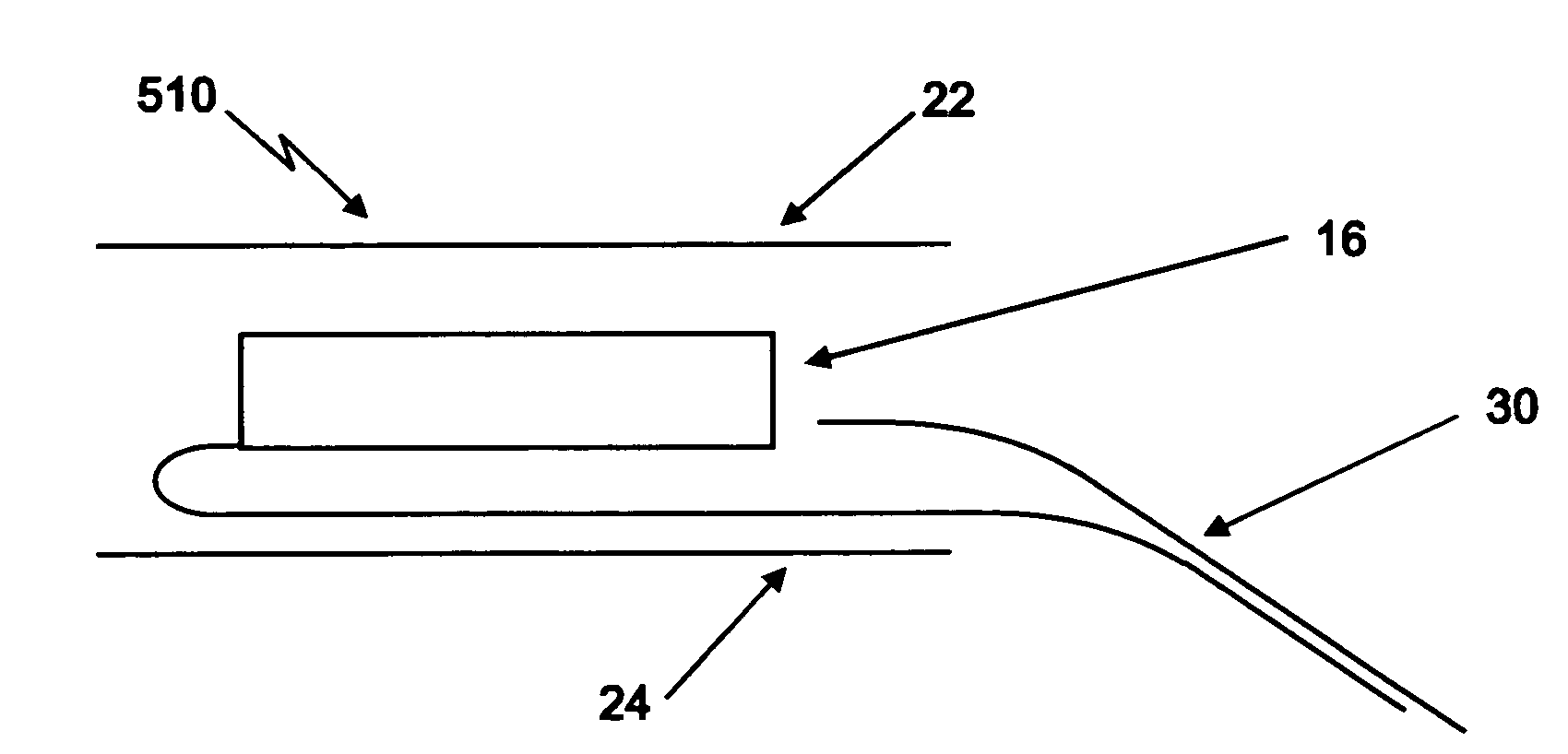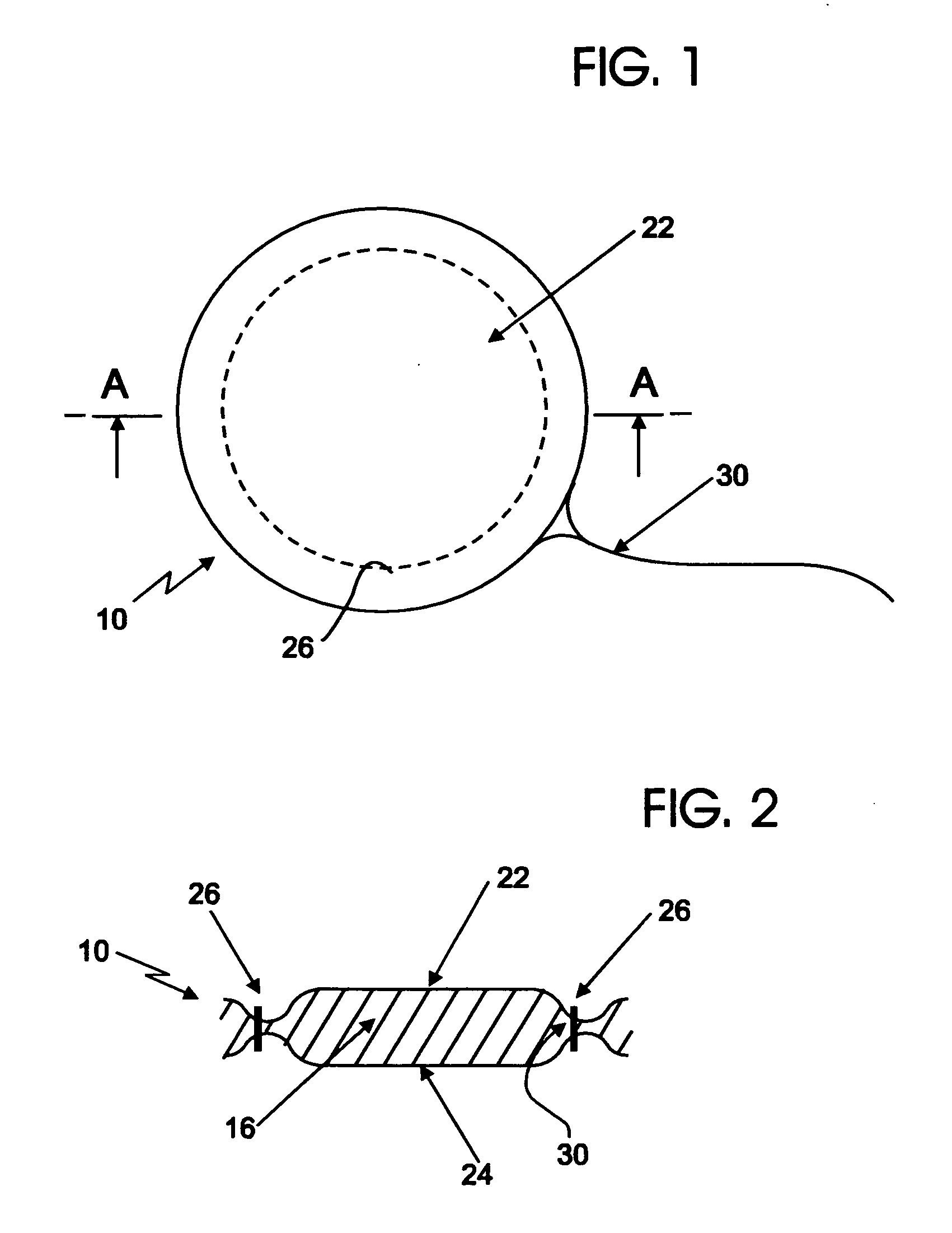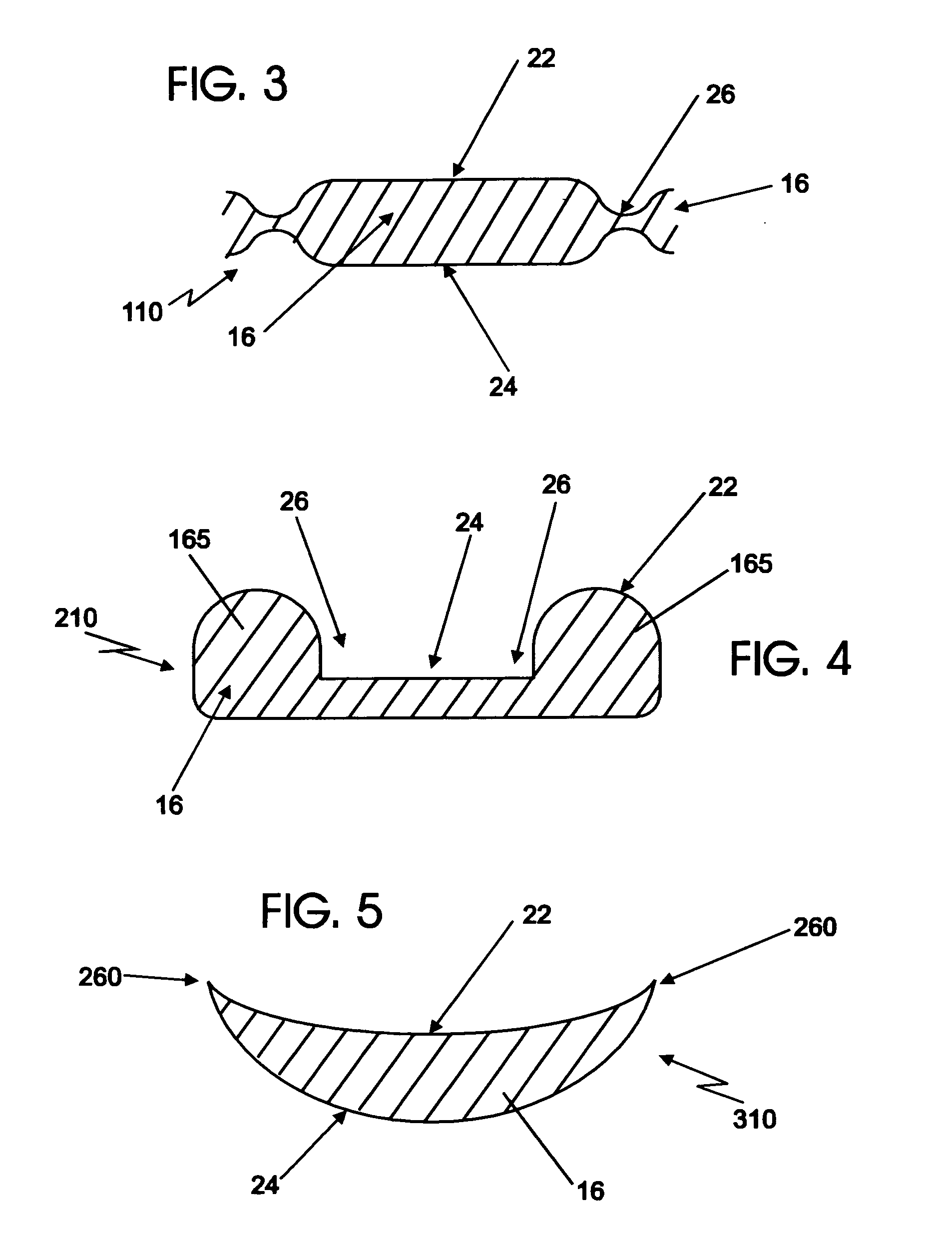Vaginal drug delivery system and method
- Summary
- Abstract
- Description
- Claims
- Application Information
AI Technical Summary
Benefits of technology
Problems solved by technology
Method used
Image
Examples
example
[0115]A device such as illustrated in FIGS. 1 and 2 is used for delivery of a water-based, thickened solution of a therapeutic agent, having a viscosity of 300 centipoises.
[0116]The reservoir of the device takes the form of an open, structured material with interconnected internal spaces (“pores”). The mean pore size diameter as determined by a porosimeter is in the range from about 100 microns to about 2000 microns, with a mean pore size in the range from about 200 to about 1500 microns being preferred. The reservoir material has a material-surface-contact angle with the flowable therapeutic formulation between about 20 degrees to about 60 degrees. The thickness of the reservoir is in the range from about one quarter inch to about one inch, with a thickness of about ⅜ inch being preferred for this Example.
[0117]A compatible covering for enveloping the above reservoir is formed of a hydroentangled and fibrillated Lyocell rayon non-woven material having a basis weight in the range fr...
PUM
 Login to View More
Login to View More Abstract
Description
Claims
Application Information
 Login to View More
Login to View More - R&D
- Intellectual Property
- Life Sciences
- Materials
- Tech Scout
- Unparalleled Data Quality
- Higher Quality Content
- 60% Fewer Hallucinations
Browse by: Latest US Patents, China's latest patents, Technical Efficacy Thesaurus, Application Domain, Technology Topic, Popular Technical Reports.
© 2025 PatSnap. All rights reserved.Legal|Privacy policy|Modern Slavery Act Transparency Statement|Sitemap|About US| Contact US: help@patsnap.com



